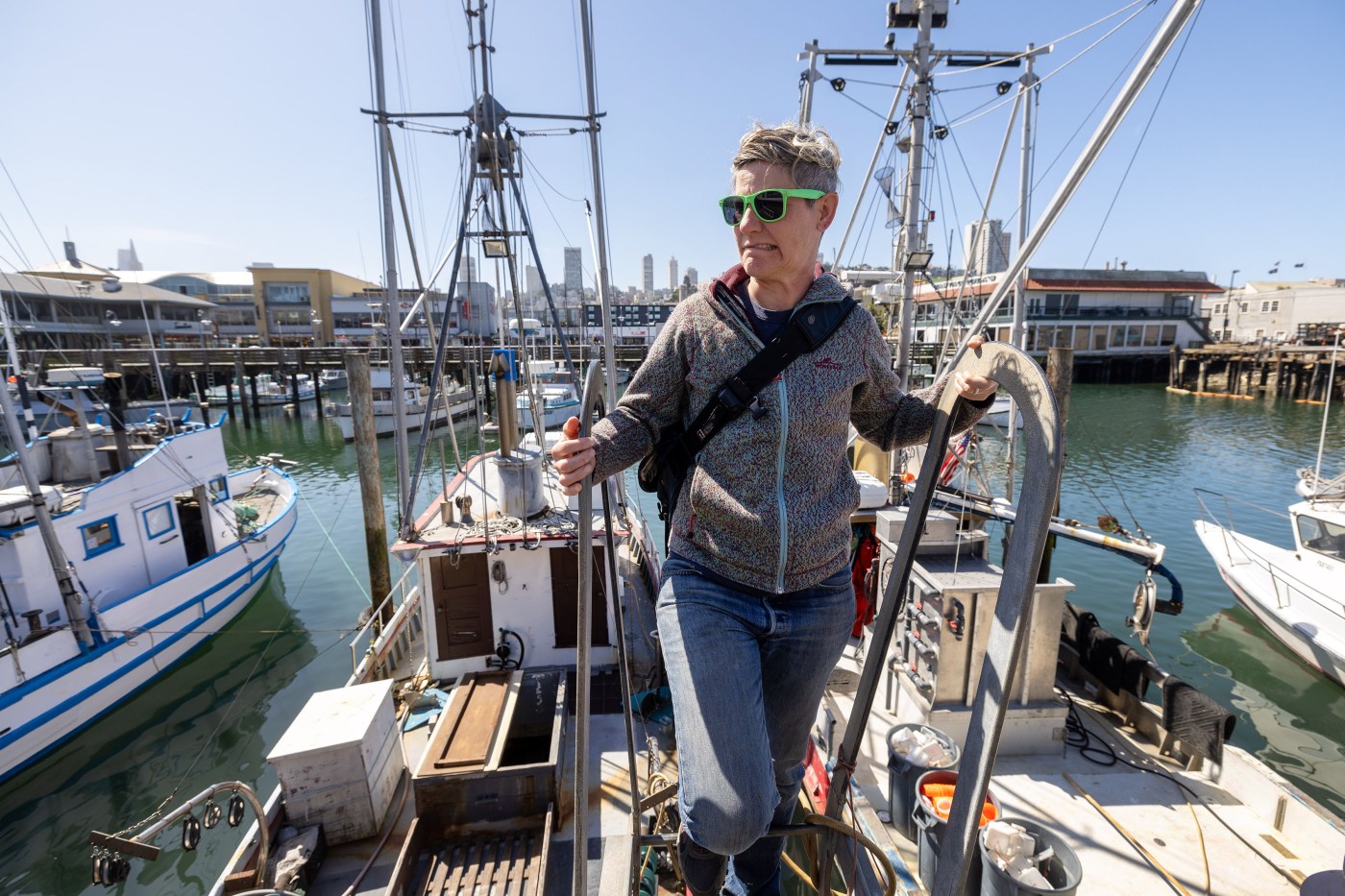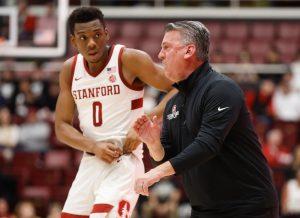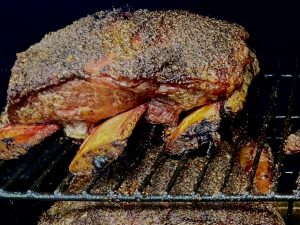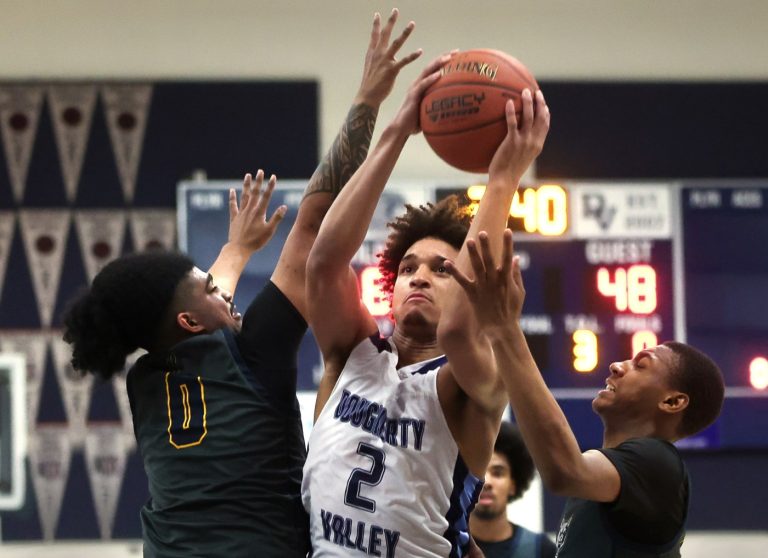In a major setback for California’s beleaguered fishing industry and the latest reminder of the state’s long-running battles over water supplies, particularly during drought years, all commercial and recreational salmon fishing will be prohibited off the California coast this year for the second year in a row.
The Pacific Fishery Management Council, a federal agency based in Oregon, announced the decision Wednesday evening, citing low numbers of Sacramento River winter Chinook, Central Valley Spring Chinook, and Upper-Sacramento River fall Chinook salmon.
The state’s salmon populations are struggling from the effects of the severe drought that gripped California from 2020 to 2022, when hotter temperatures and lower water levels in streams and rivers killed many of the young fish.
During the drought, cities, farms and fishing interests battled for limited water supplies.
On Thursday, fishing and environmental groups said state and federal water managers should have kept more water in rivers and behind dams to reduce the impact and managed it more effectively. That almost certainly would have meant less water would have been pumped to cities and farms during the drought.
“It’s heartbreaking. It’s a travesty,” said Scott Artis, executive director of the Golden State Salmon Association.
“State and federal water managers are devastating our rivers,” he added. “They are removing vast amounts of water and creating lethally high temperatures in those rivers that are destroying salmon. If you kill all the baby salmon through California water policy, then two or three years later you aren’t going to have adults returning, or very few. This is the governor’s legacy.”
Gov. Gavin Newsom on Thursday announced the state would ask the federal government for a disaster declaration to provide financial assistance to the owners of commercial salmon fishing boats, recreational boats, and others in the industry.
“Decades of climate extremes have severely impacted our salmon populations, and we’re taking action to address this crisis for the long-term,” Newsom said. “We’ll continue working with the Biden Administration and Congress to ensure California’s fisheries and impacted communities are supported during this critical time.”
Last year, the U.S. Commerce Department approved spending $20.6 million to help salmon fishermen after the season was closed. But Thursday, fishing industry officials said they have not yet received the money.
The news comes the same week that the state Department of Fish and Wildlife closed the commercial Dungeness crab season early this year, allowing it to be open for only three months, to protect humpback whales from becoming entangled in trap and buoy lines.
“We’ve had a reduction in our crab season, a reduction in our rockfish season, and now we are going to go 9 months without potential income,” said Dick Ogg, a commercial salmon fisherman based in Bodega Bay. “This closure is very impactful to all of us. We are having a difficult time to say the least.”
The salmon closure this year is not expected to cause shortages of salmon in stores or restaurants in California. As with last year, there will be wild salmon available from Oregon, Washington, and Alaska, along with farmed salmon from Norway, Canada and other countries.
But for families who own fishing boats, it’s another setback in a long downward trend.
Thanh Dang of San Jose picks up a salmon caught on his boat The Sea Monkey for for California Department of Fish and Wildlife technician Amanda McDermott to see as Dang’s friends Frank Wong, left, and Theo Ta look on during the opening day of the recreational salmon season at Moss Landing Harbor on Saturday April 1, 2017. (David Royal – Monterey Herald)
California’s commercial salmon fleet has shrunk by nearly 25% in the past decade. In 2022, there were 464 commercial boats that participated in the salmon fishery, according to the Pacific Fishery Management Council, down from 616 a decade earlier in 2012. That number is a fraction of what it was a generation before, when there were 4,750 vessels in the late 1970s.
Salmon populations generally tend to rise and fall based on whether the state is in a drought or not.
But the overall downward trend has been caused by a variety of other factors, scientists say, including the construction of dams that have blocked salmon migration up and down rivers, wildfires that can cause erosion and sediment to clog rivers and streams, and the huge pumps near Tracy operated by the State Water Project and the Central Valley Project, which can kill fish as they move water from the Sacramento-San Joaquin River Delta south to cities and farms.
Salmon fishing was also closed in California during the 2008 and 2009 seasons, for the first time in state history.
Salmon are born in rivers, swim to the ocean, grow in size and return to the rivers where they were born to spawn and die. Federal fisheries managers estimate that 133,638 Sacramento River fall fun Chinook, the main commercial salmon species in the state, returned last year to the Sacramento River. That’s more than double the estimated 61,862 that returned the year before. But it is nearly 20% below forecasted numbers, even though fishing was banned last year. And historically, scientists say, more than 1 million of the fish returned to spawn.
In January, Newsom visited salmon restoration sites in Humboldt County, and announced a plan aimed at restoring populations of the iconic fish.
The plan called for continued removal of outdated, or silted-up dams that block rivers. Four major dams on the Klamath River on the California-Oregon border are now being removed. It also called for restoring wetlands and stream habitat in the Delta, San Francisco Bay and other locations.
Fishing organizations said they support this year’s salmon closure, noting that it should help to improve populations of the fish.
But they said they want more of a voice in statewide water decisions, and more action to guarantee flows in rivers, streams and the Delta, especially during dry times.
“This is a huge sacrifice of our income as a commercial fishing fleet, for everyone who wants to takes boat ride into the ocean and get a fish for their barbecue for Fathers Day, and for markets and our local food security,” said Sarah Bates, captain of the Bounty, a 1926-era salmon troller she docks in San Francisco “But we cannot be the only ones making a sacrifice.”
“Salmon have been feeding Californians for thousands and thousands of years,” she added. “Right now they are last in line for the water resources that they need to survive.”
Commercial fishing boats sit at Fisherman’s Wharf in San Francisco on Thursday April 12, 2024. (Karl Mondon, Bay Area News Group)












